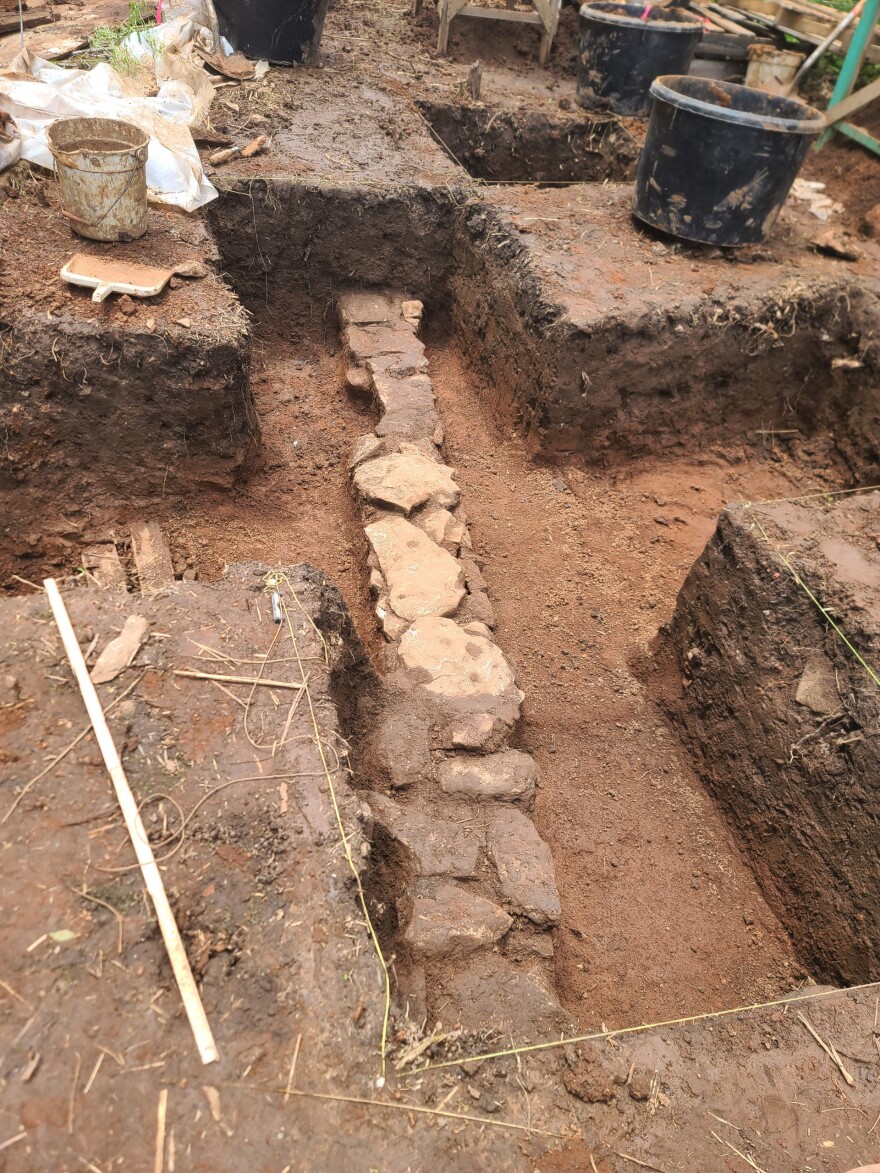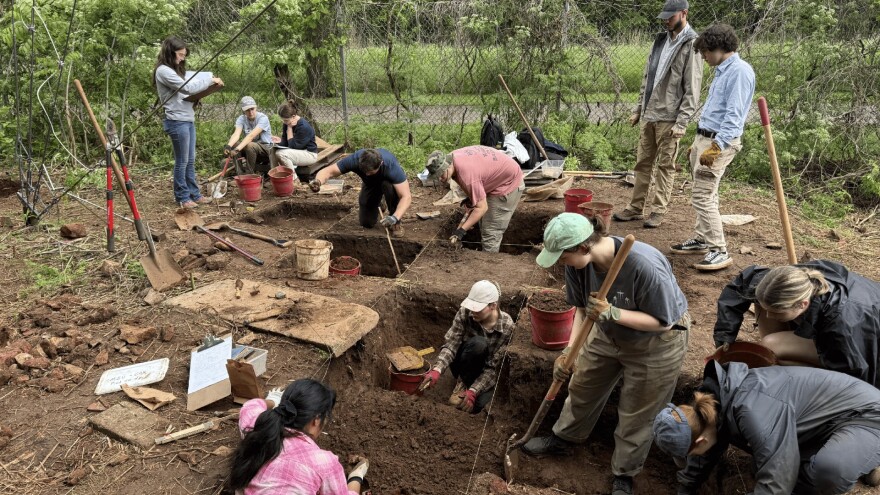A team of students, led by the Center for Archaeological Research at Missouri State University, has uncovered a piece of early Springfield history.
In May, 20 students and Dr. Daniel Pierce, a research archeologist at the MO St Center for Archaeological Research or CAR took part in a field school at a site in southwest Springfield. That location, which straddles the Darr Agriculture Center and Nathanael Greene-Close Memorial Park, was once occupied by one of Springfield’s earliest homesteads. Former CAR Director Dr. Neal Lopinot had discovered antebellum artifacts there. CAR did field work at the site in 2008 and 2012 and uncovered artifacts such as Civil War-era button and 19th Century ceramics.
CAR Director Kevin Cupka Head said things like tax documents and census records, discovered by an MSU student shed light on who lived there.
"What we do know is that the site was purchased from a man named Alexander McKenzie by William Townsend in 1832. And William Townsend was someone from Tennessee who came here with his family and several enslaved persons and set up a house there," he said. "And at that time, the Old Wire Road would have been running through the property, and so it would have been a nice plot of land there."

During the field school, students excavated and surveyed the site. Then Dr. Pierce had to leave for a project in Mexico. Soon after, Cupka Head discovered foundation remains – at least 15 feet long – believed to have been part of a house that once stood there.
"And the day after I left town, Kevin covered me in the field and made the discovery," said Pierce.
"I swooped in and took all the glory and all the credit," joked Cupka Head. "No, it was clear that, you know...we were closing in. We knew that...we were able to rule out a lot of areas because there was previous disturbance or not a lot of artifacts, but we were able to...follow the trail of artifacts and where they're getting denser and denser, their earlier stuff, and so it was really only a matter of time."
He said, when the discovery was made, there was lots of excitement among the students.
Nails the team discovered indicate the house had plank flooring. The fact that the nails weren’t very corroded likely means there was a fire at some point in the past, according to Cupka Head.
"It's possible the house burned, or a portion of the house burned," he said, and that resulted in preserving these nails without oxidation. So that's going to be something interesting to, you know, we have questions now that we could go back and test, which is always fun."
The excavation uncovered a layer of floor sweepings, including ash, ceramic fragments and other debris, that had accumulated over time. The team also found gun flints and tobacco pipes.
CAR is done at the site for now, but Cupka Head said they hope to do more work there later. There’s reportedly a lost cemetery somewhere on the MSU Darr Center property that he wants to try to find.
He hopes the artifacts they discovered can one day be put on public display.



